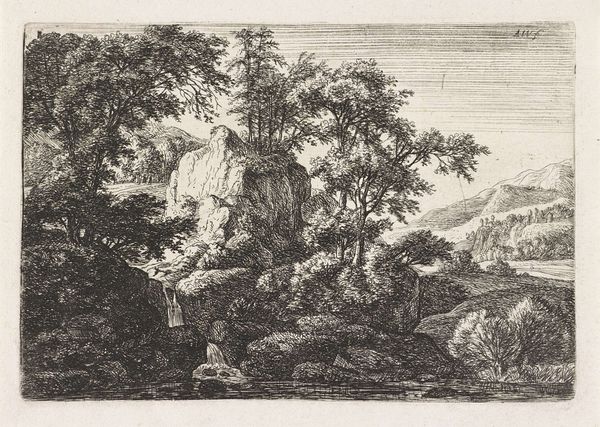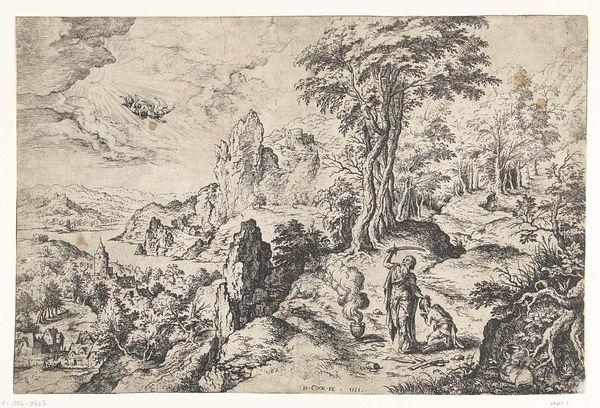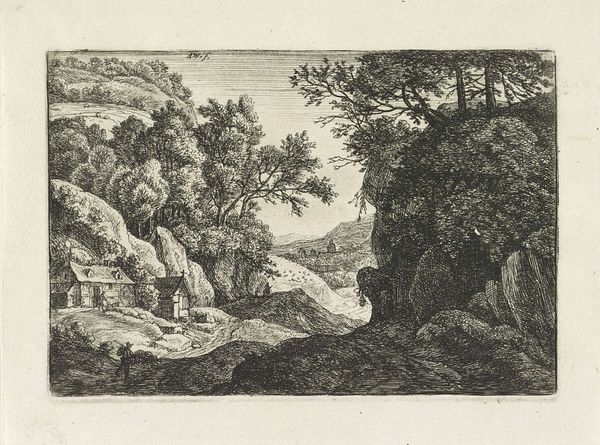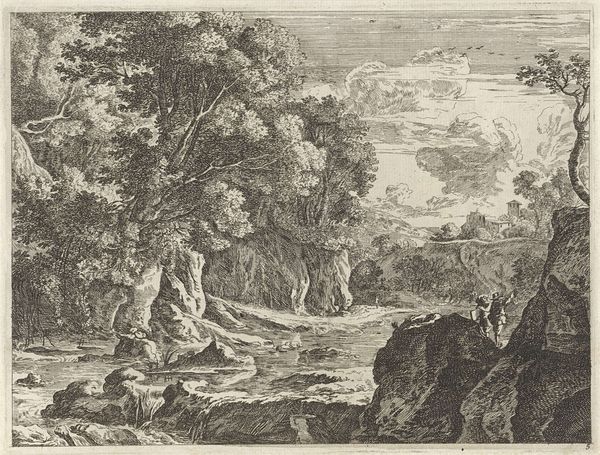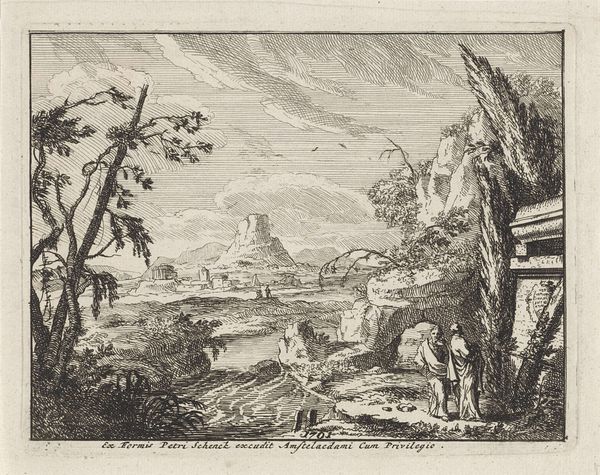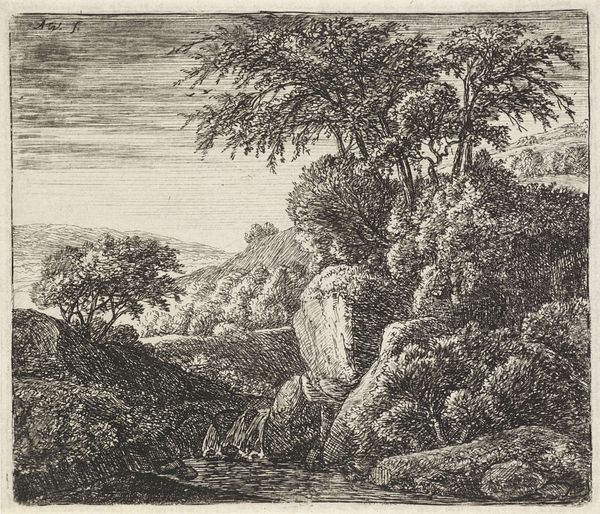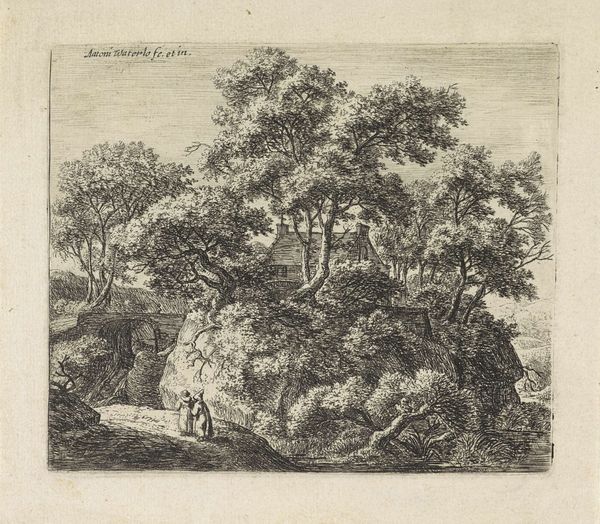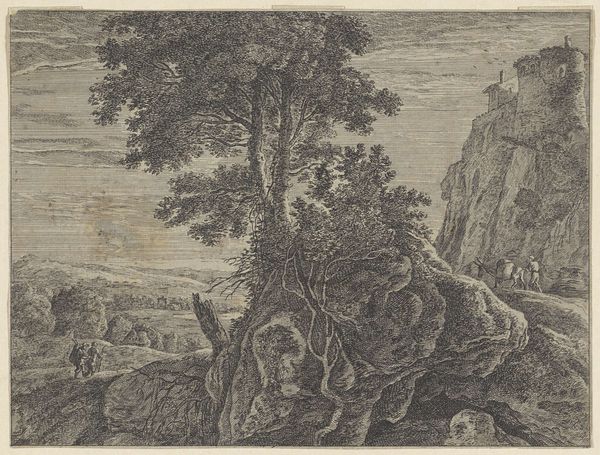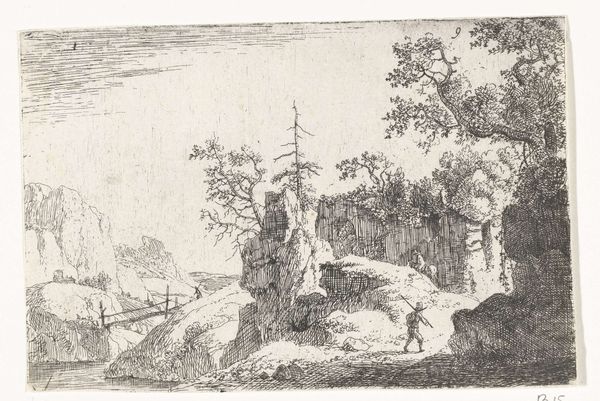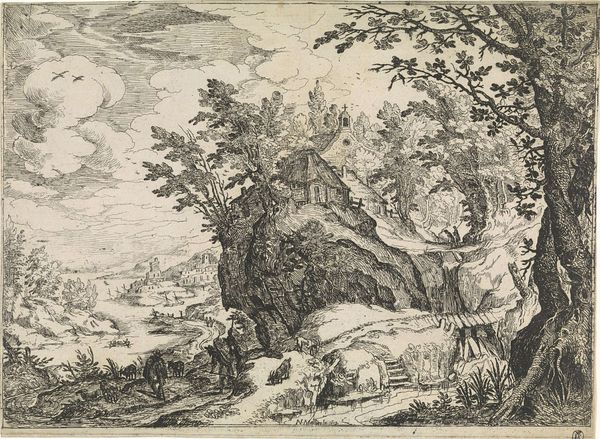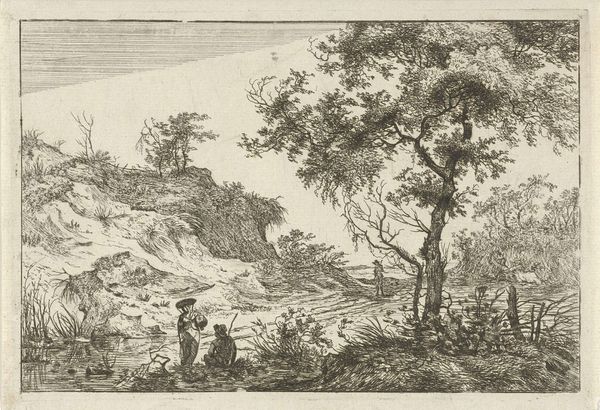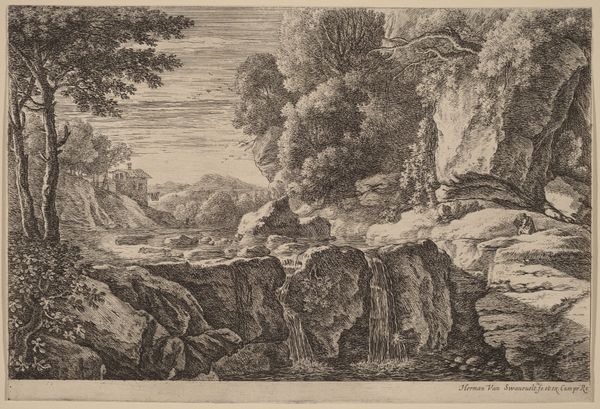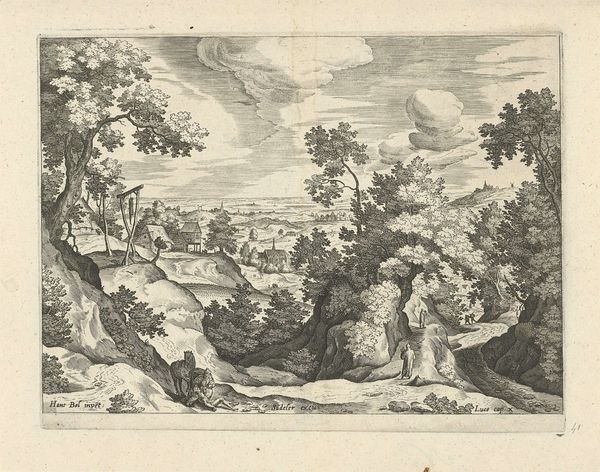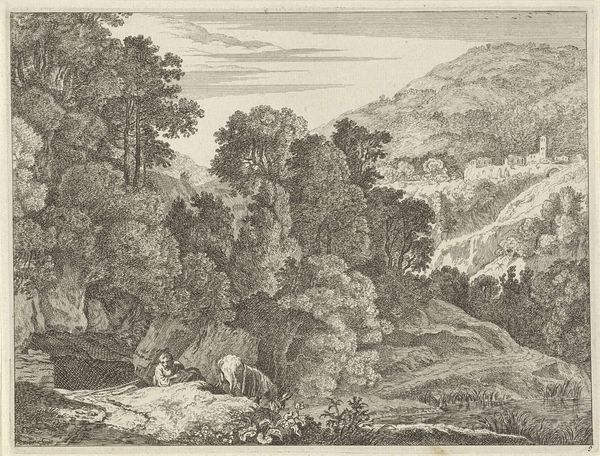
print, etching
#
baroque
# print
#
etching
#
landscape
#
waterfall
#
cityscape
Dimensions: height 117 mm, width 167 mm
Copyright: Rijks Museum: Open Domain
Curator: I find the composition almost overwhelming, a surge of detail that makes my eyes dart around the page, like trying to take in a whole panorama at once. Editor: Then Anthonie Waterloo's etching, "Drievoudige Waterval"—or "Triple Waterfall"—at the Rijksmuseum, dating possibly from 1630 to 1717, certainly achieves its aim! These cascading landscapes were popular in the Baroque period, representing an escape from the increasingly urban world. Curator: Escape, yes, but it’s still a constructed paradise. Look at how carefully he places the symbols. Water, of course, always represents purification and the flow of life, but the waterfall, specifically, is about transformation, overcoming obstacles. Editor: Exactly! And within the Baroque style, we see that dynamism is key—that theatricality of the falls themselves and even the winding road that compels the eye to trace its route. Curator: Even the city on the hill...the cityscape looms as a distant echo, reinforcing this ordered tension between nature and the world. Do you notice the buildings placed at the peak? Churches. Temples. Always watching. Editor: It seems as if every element is chosen to deliver both visual pleasure and some symbolic heft. The large rocks are powerful foundations for the tall proud tree in the composition. All point to perseverance. Even in a time of war. The Dutch had many struggles within this time period. This print reminds the people that one could persevere through troubles in life and be on solid foundations when its all said and done. Curator: Perhaps even this small print, by capturing a sense of awe, was meant to reinforce existing social structures – a way for those in power to co-opt nature's grandeur. Editor: It is hard to be certain; however, there's still a captivating, visceral feeling, regardless of its underlying context. That enduring visual vocabulary really bridges time. Curator: I find myself pondering how artists leverage enduring archetypes to shape the socio-political consciousness of their audiences. The past truly permeates our present!
Comments
No comments
Be the first to comment and join the conversation on the ultimate creative platform.
